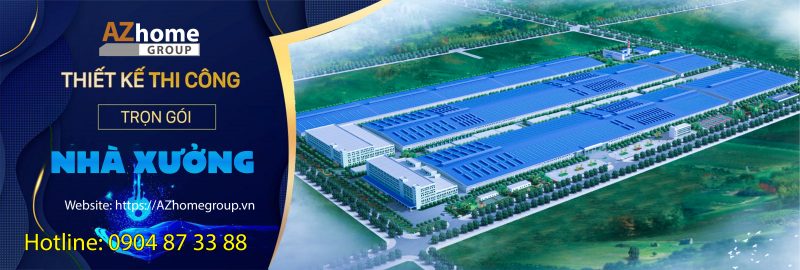Wind and Solar Power Systems Design, Analysis, and Operation, Nội dung tài liệu:
PART A Wind Power Systems
Chapter 1 Introduction
1.1 Industry Overview
1.2 History of Renewable Energy Development
1.3 Utility Perspective
Chapter 2 Wind Power
2.1 Wind Power in the World
2.2 U.S. Wind Power Development
Chapter 3 Wind Speed and Energy
3.1 Speed and Power Relation
3.2 Power Extracted from the Wind
3.3 Rotor-Swept Area
3.4 Air Density
3.5 Wind Speed Distribution
3.6 Wind Speed Prediction
Chapter 4 Wind Power Systems
4.1 System Components
4.2 Turbine Rating
4.3 Power vs. Speed and TSR
4.4 Maximum Energy Capture
4.5 Maximum Power Operation
4.6 System-Design Trade-offs
4.7 System Control Requirements
4.8 Environmental Aspects
4.9 Potential Catastrophes
4.10 System-Design Trends
Chapter 5 Electrical Generators
5.1 Turbine Conversion Systems
5.2 Synchronous Generator
5.3 Induction Generator
5.4 Doubly Fed Induction Generator
5.5 Direct-Driven Generator
5.6 Unconventional Generators
5.7 Multiphase Generators
Chapter 6 Generator Drives
6.1 Speed Control Regions
6.2 Generator Drives
6.3 Drive Selection
6.4 Cutout Speed Selection
Chapter 7 Offshore Wind Farms
7.1 Environmental Impact
7.2 Ocean Water Composition
7.3 Wave Energy and Power
7.4 Ocean Structure Design
7.5 Corrosion
7.6 Foundation
7.7 Materials
7.8 Maintenance
Chapter 8 AC Wind Systems
8.1 Overview
8.2 Wind Turbine and Wind Farm Components
8.3 System Analyses
8.4 Challenges
Chapter 9 DC Wind Systems
9.1 Making a Case for All-DC Wind System
9.2 Overview
9.3 All-DC System Components
9.4 System Analyses
9.5 Variable Voltage Collector Grid
PART B Photovoltaic Power Systems
Chapter 10 Photovoltaic Power
10.1 Building-Integrated PV System
10.2 PV Cell Technologies
Chapter 11 Photovoltaic Power Systems
11.1 PV Cell
11.2 Module and Array
11.3 Equivalent Electrical Circuit
11.4 Open-Circuit Voltage and Short-Circuit Current
11.5 I-V and P-V Curves
11.6 Array Design
11.7 Peak-Power Operation
11.8 System Components of Stand-Alone System
Chapter 12 Solar Power Conversion Systems
12.1 Overview
12.2 Solar Power Electronics Systems
12.3 Challenges
12.4 Trend and Future
PART C System Integration
Chapter 13 Energy Storage
13.1 Battery
13.2 Types of Battery
13.3 Equivalent Electrical Circuit
13.4 Performance Characteristics
13.5 More on Lead-Acid Battery
13.6 Battery Design
13.7 Battery Charging
13.8 Charge Regulators
13.9 Battery Management
13.10 Flywheel
13.11 Superconducting Magnet
13.12 Compressed Air
13.13 Technologies Compared
13.14 More on Lithium-Ion Battery
Chapter 14 Power Electronics
14.1 Basic Switching Devices
14.2 AC-DC Rectifier
14.3 AC-DC Inverter
14.4 IGBT/MOSFET-Based Converters
14.5 Control Schemes
14.6 Multilevel Converters
14.7 HVDC Converters
14.8 Matrix Converters
14.9 Cycloconverter
14.10 Grid Interface Controls
14.11 Battery Charge/Discharge Converters
14.12 Power Shunts
Chapter 15 Stand-Alone Systems
15.1 PV Stand-Alone
15.2 Electric Vehicle
15.3 Wind Stand-Alone
15.4 Hybrid Systems
15.5 System Sizing
15.6 Wind Farm Sizing
Chapter 16 Grid-Connected Systems
16.1 Interface Requirements
16.2 Synchronizing with the Grid
16.3 Operating Limit
16.4 Energy Storage and Load Scheduling
16.5 Utility Resource Planning Tools
16.6 Wind Farm–Grid Integration
16.7 Grid Stability Issues
16.8 Distributed Power Generation
Chapter 17 Electrical Performance
17.1 Voltage Current and Power Relations
17.2 Component Design for Maximum Efficiency
17.3 Electrical System Model
17.4 Static Bus Impedance and Voltage Regulation
17.5 Dynamic Bus Impedance and Ripples
17.6 Harmonics
17.7 Quality of Power
17.8 Renewable Capacity Limit
17.9 Lightning Protection
Chapter 18 Plant Economy
18.1 Energy Delivery Factor
18.2 Initial Capital Cost
18.3 Availability and Maintenance
18.4 Energy Cost Estimates
18.5 Sensitivity Analysis
18.6 Profitability Index
18.7 Project Finance
Chapter 19 The Future
19.1 World Electricity to 2050
19.2 Future of Wind Power
19.3 PV Future
19.4 Declining Production Cost
19.5 Market Penetration
PART D Ancillary Power Technologies
Chapter 20 Solar Thermal System
20.1 Energy Collection
20.2 Solar-II Power Plant
20.3 Synchronous Generator
20.4 Commercial Power Plants
20.5 Recent Trends
Chapter 21 Ancillary Power Systems
21.1 Heat-Induced Wind Power
21.2 Marine Current Power
21.3 Ocean Wave Power
21.4 Jet-Assisted Wind Turbine
21.5 Bladeless Wind Turbine
21.6 Solar Thermal Microturbine
21.7 Thermophotovoltaic System











